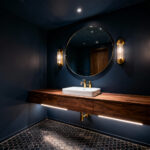Designing a home, when done with intention, becomes an act of profound self-care—every choice reflects not just a passing aesthetic, but deeper values about how you want to feel and function in your space. The most compelling homes aren’t simply decorated; they are curated sanctuaries. They tell a story of well-being, of vitality, and of a deep connection between inhabitant and environment.
Nowhere is this connection more vital than in the kitchen, the very heart of the home. And at the center of that heart lies the island—a place of creation, conversation, and connection. The light that bathes this space does more than just illuminate tasks. As a designer specializing in wellness architecture, I’ve seen firsthand how light acts as a powerful nutrient for our bodies and minds. The right kitchen lighting over island can regulate our energy, improve our mood, and turn a functional surface into a beacon of warmth and health. These 20 principles will guide you beyond trends, helping you create an island that truly nourishes.
Harmonic Illumination: Crafting an Intentional Glow
Before we choose a single fixture, we must first understand the spirit of light itself. True illumination is about creating a harmony between our inner biology and our outer environment. This is where we lay the foundation, thinking not just about what we see, but about how the light makes us feel on a cellular level.
1. Nurture Your Natural Rhythms
The most important job of your home’s lighting is to support your circadian rhythm—your body’s internal 24-hour clock. Think of light as a signal: cool, bright light in the morning tells your body it’s time to be alert and focused, while warm, dim light in the evening cues it to relax and prepare for rest. Applying this to your island means choosing tunable lighting that can adapt throughout the day.
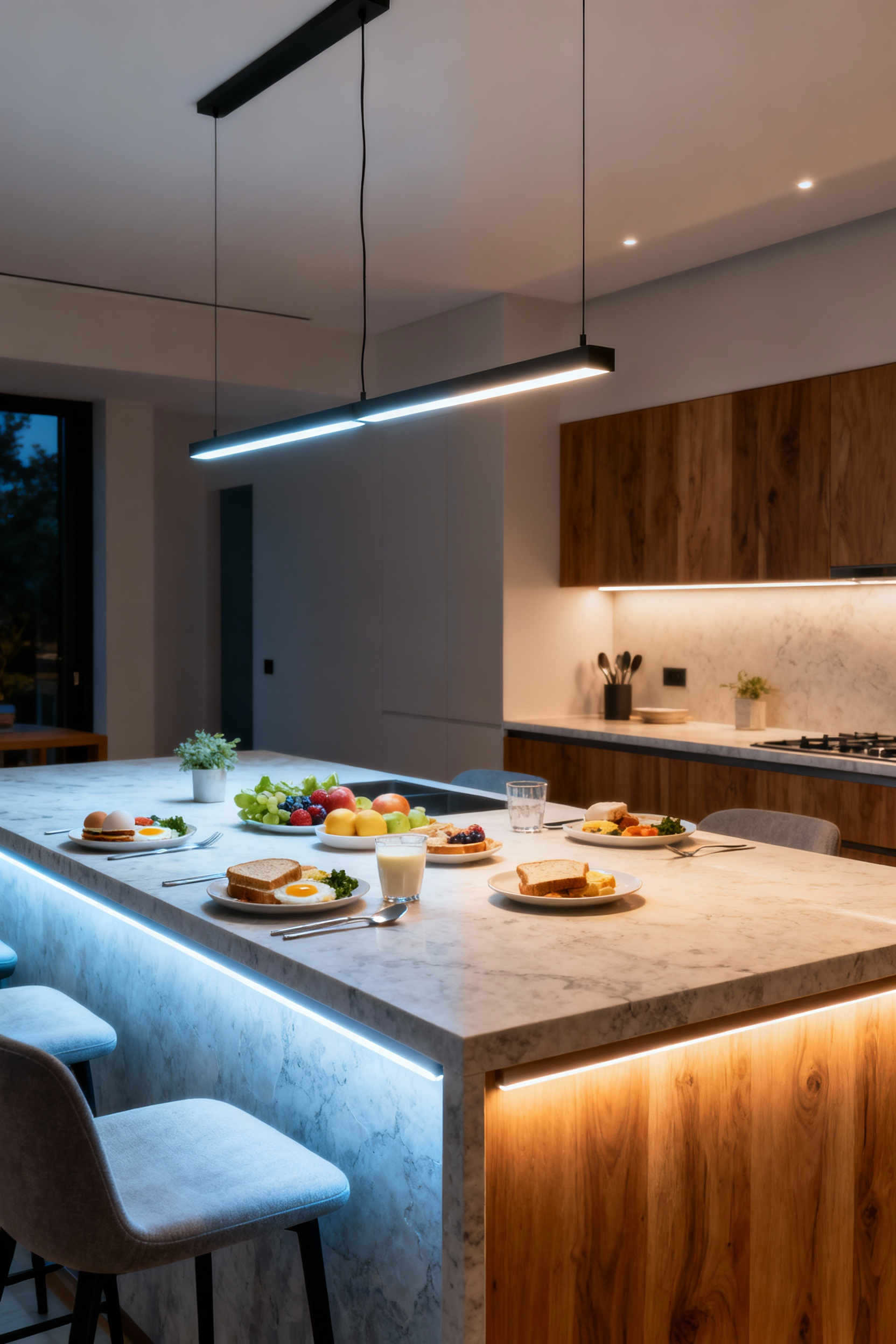
A crisp, blue-toned white light (around 4000K) is perfect for that morning energy boost as you prepare breakfast. As the day winds down, the system can transition to a soft, amber glow (around 2700K), mimicking the sunset. In my wellness design practice, I’ve seen clients experience remarkable improvements in sleep quality and daytime energy simply by aligning their kitchen lighting with the natural cycle of the sun. This isn’t a luxury; it’s fundamental to creating a supportive environment.
2. Define the Island’s Many Roles
Your kitchen island is rarely just one thing. It’s a prep station, a dining table, a homework hub, a cocktail bar. Each of these roles calls for a different quality of light. Layering your lighting allows you to gracefully transition between these functions, creating a “luminous narrative” for your space.
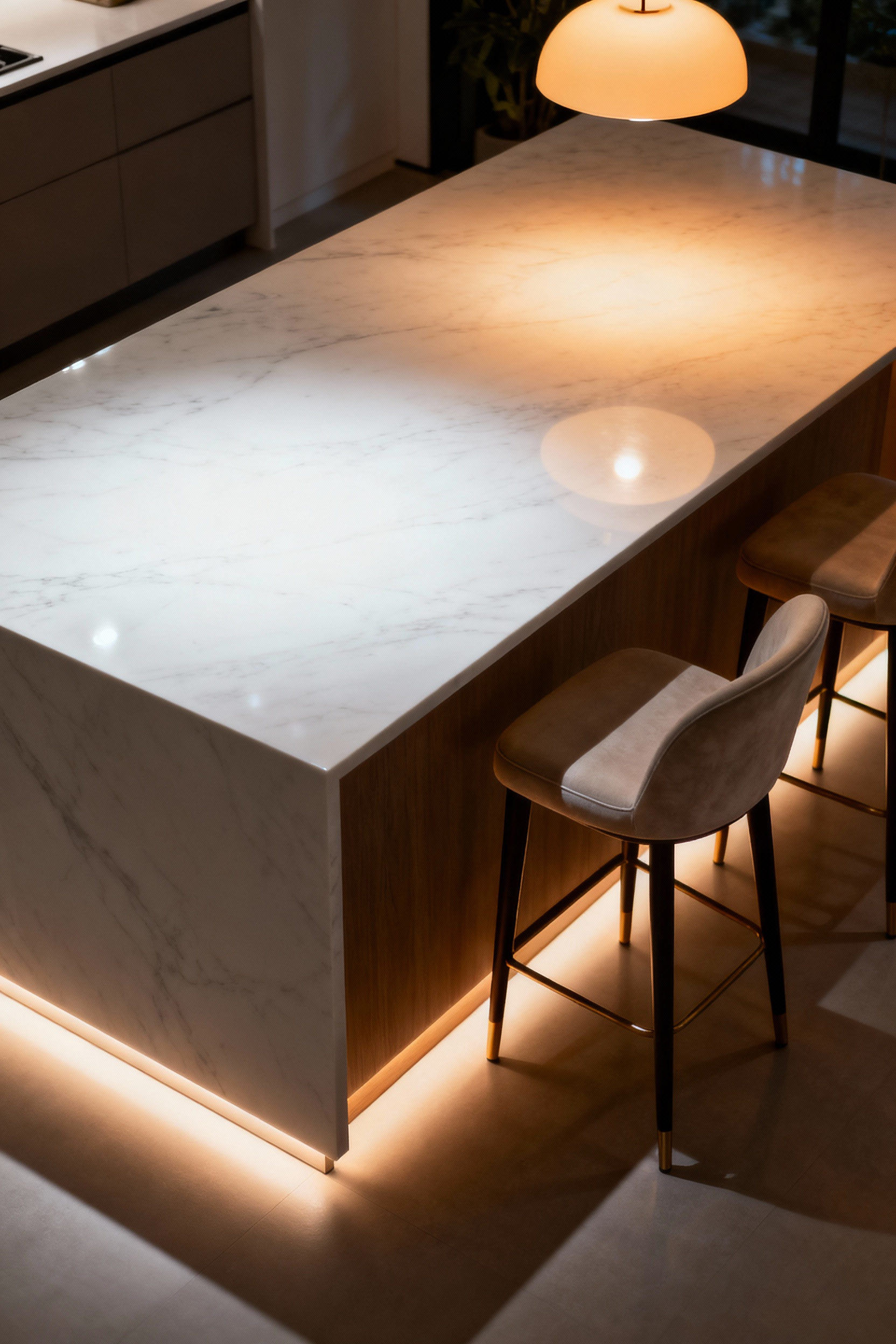
Start with a primary layer of bright, focused task lighting from pendants or recessed downlights for chopping and cooking. Then, add a secondary, softer ambient layer with diffused fixtures or dimmable sources for socializing. Finally, a tertiary accent layer—perhaps a gentle glow from an LED strip under the counter’s edge—can create pure mood. This ensures the island feels intuitive and responsive to your life, not just like a static piece of furniture.
3. Shape the Emotional Feel of Your Space
Light is a powerful tool for shaping the emotional psychology of a room. A concentrated pool of warm light can create an immediate sense of intimacy and focus, while broad, diffuse light fosters a feeling of openness and community. Think about the feeling you want to cultivate at your island.
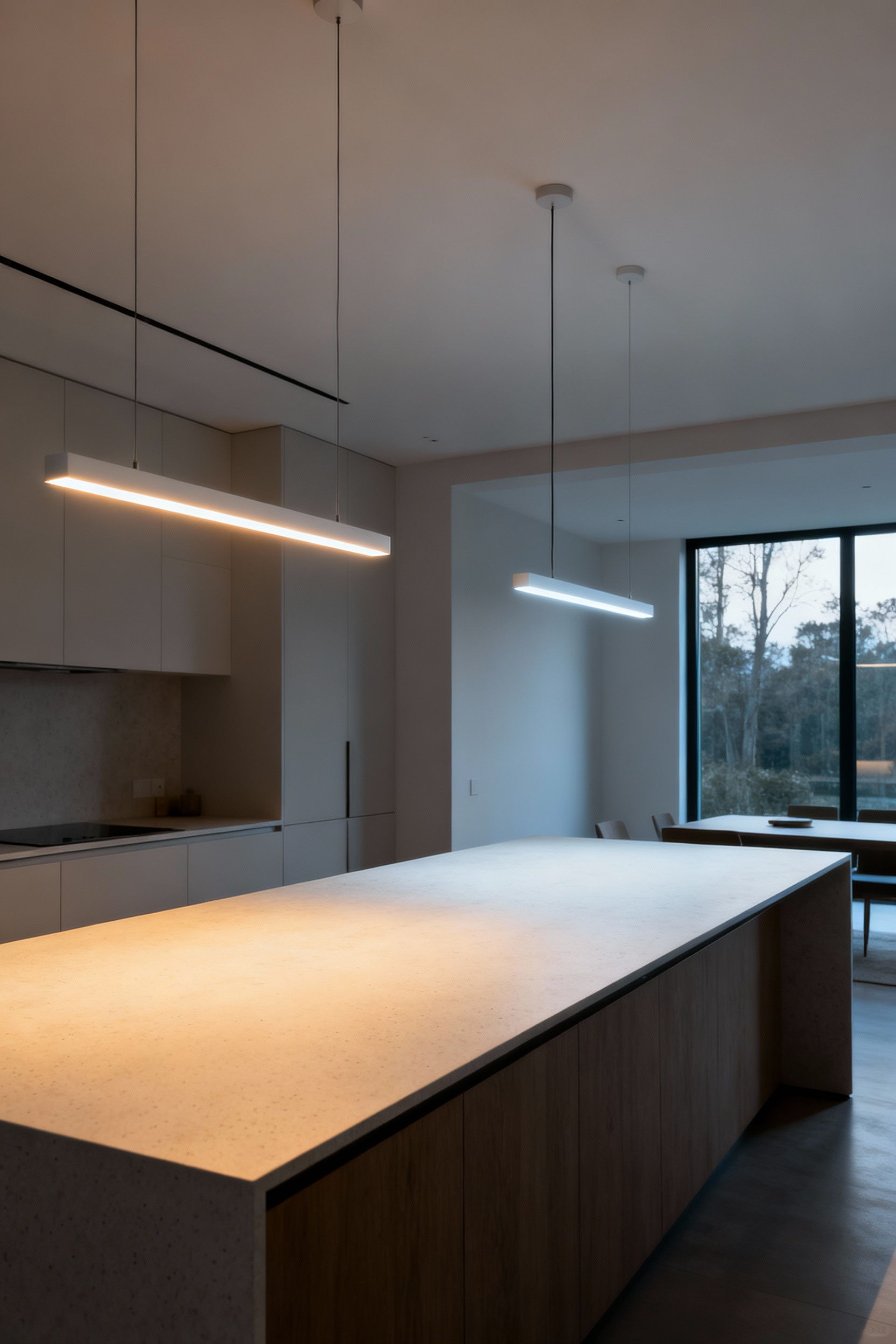
For a family that loves to gather and chat while cooking, a collection of pendants with wide, glowing shades can create an inviting, communal atmosphere. If you envision your island as a sophisticated spot for entertaining, a dramatic, sculptural fixture that casts intricate patterns of light and shadow might be more fitting. We are not just lighting a countertop; we are sculpting the emotional experience of being in the space.
4. Harmonize with the Kitchen’s Full Story
Your island lighting doesn’t exist in a vacuum. It must work in concert with the rest of your kitchen’s illumination—the recessed cans, the under-cabinet task lights, the sconces over the sink. A holistically designed space ensures these different sources speak the same visual language.
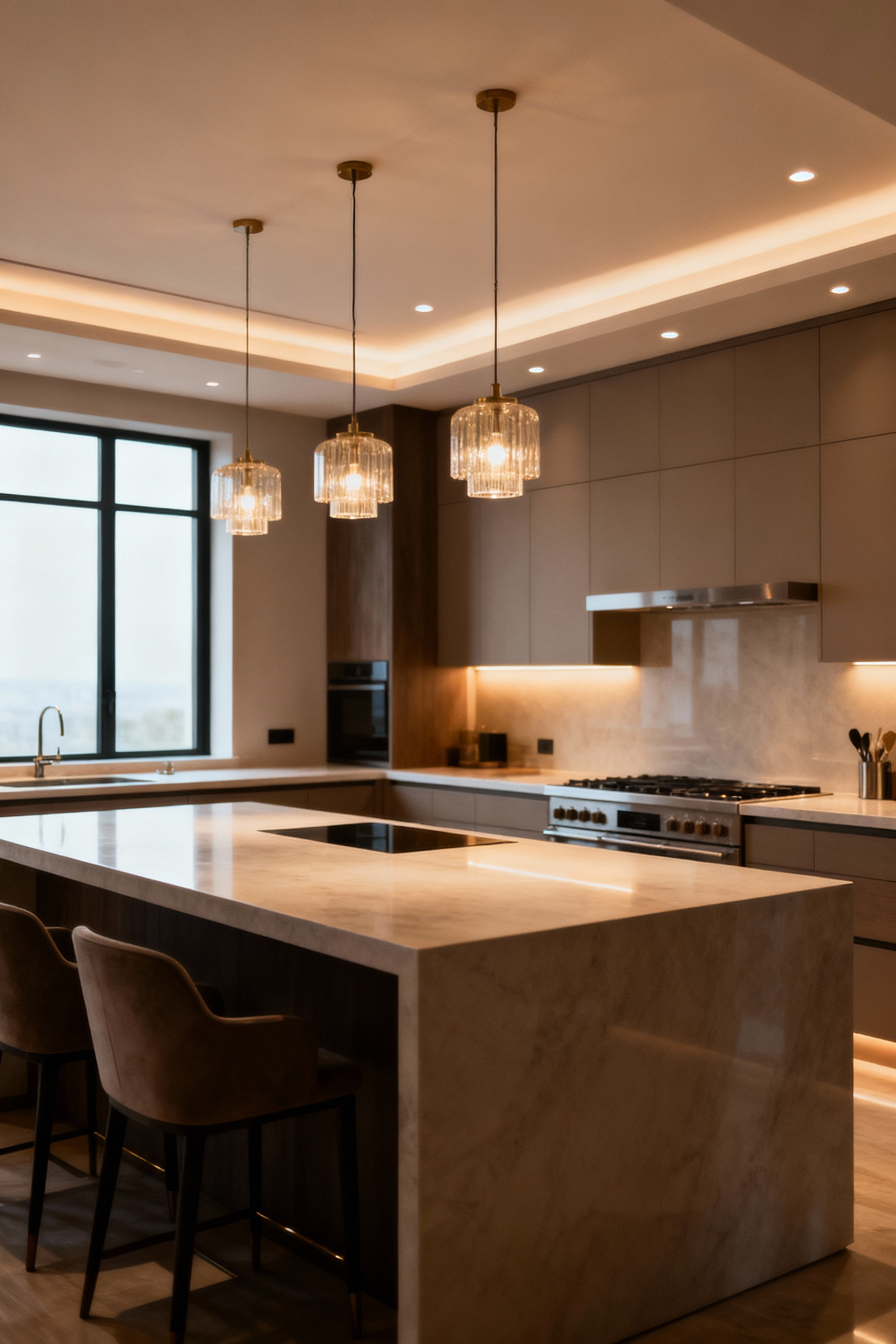
This means paying attention to consistency in color temperature and dimming performance. There’s nothing more jarring than an island glowing warm white while the ceiling lights cast a cold, sterile blue. In my mindful space planning work, I treat all the light sources in a room like members of an orchestra. They all have different parts to play, but they must be in the same key to create a beautiful symphony rather than a chaotic noise.
5. Understand How Surfaces Talk to Light
Every surface in your kitchen has a conversation with the light you introduce. This interaction is defined by a material’s Light Reflectance Value (LRV), a simple measure of how much light it bounces back. A high-gloss white quartz countertop (high LRV) will amplify your lighting, creating a bright, energetic feel and potentially requiring less intense fixtures.
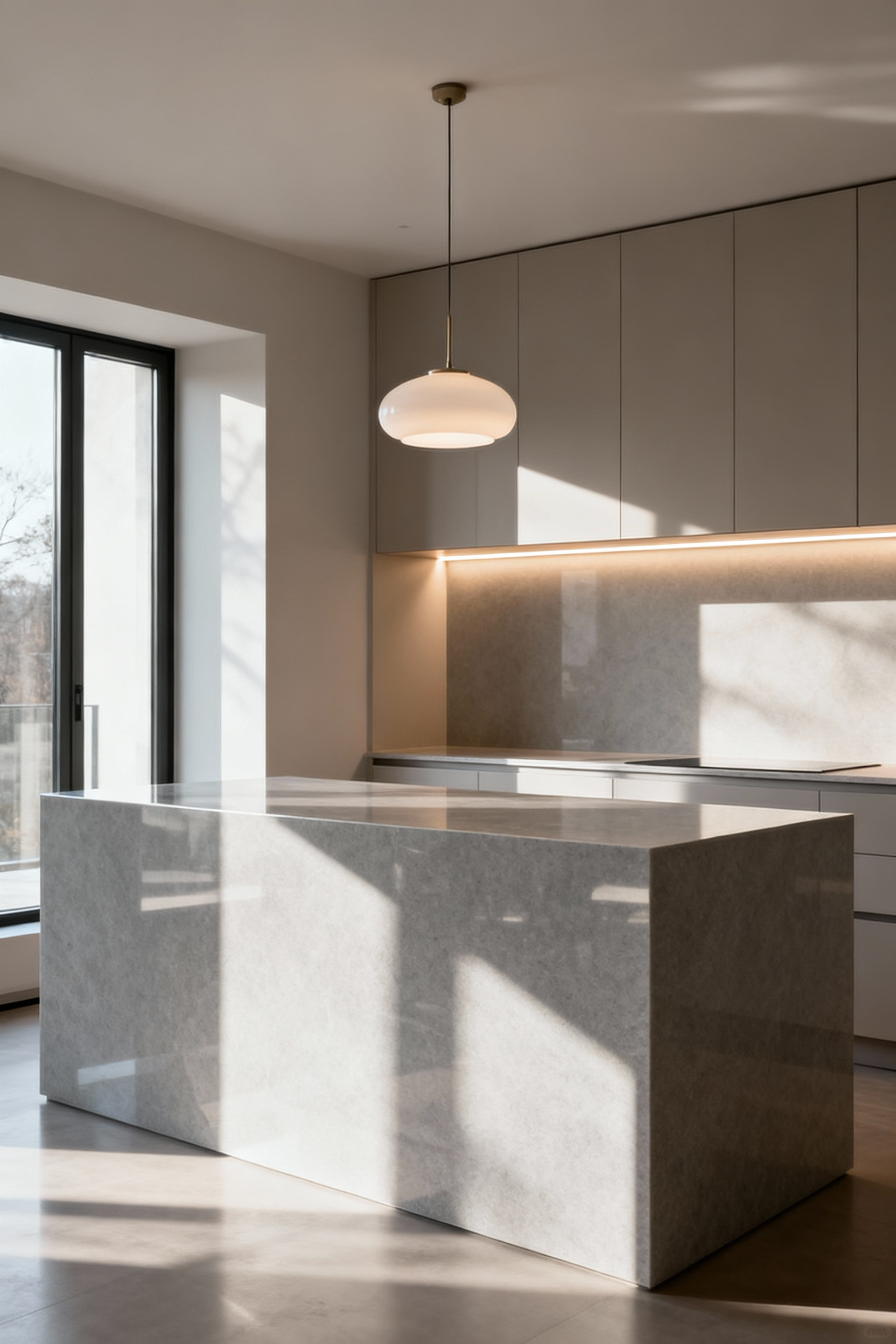
Conversely, a dark, matte soapstone or honed granite (low LRV) will absorb light, requiring more focused and powerful illumination to prevent the space from feeling dim. I learned this when designing for a client in the Pacific Northwest, where maximizing every bit of daylight was crucial. We chose a countertop with a subtle sheen and a light-toned backsplash to help reflect the natural light from the windows deep into the kitchen, supporting their mood through the long, gray winters.
Elemental Luminance: Curating Fixtures, Finishes, and Quality
With our foundational principles in place, we can now turn to the tangible elements—the fixtures themselves. This is about choosing materials and light sources with intention, understanding that every finish, every bulb, and every shape contributes to the overall wellness and aesthetic harmony of your kitchen.
6. Look Beyond a Single Pendant
While pendants are a classic choice, they aren’t the only one. Exploring different fixture types, or modalities, allows for a more tailored solution. For kitchens with lower ceilings or a desire for an unobstructed view, a semi-flush mount fixture can provide beautiful ambient light without dominating the space visually.
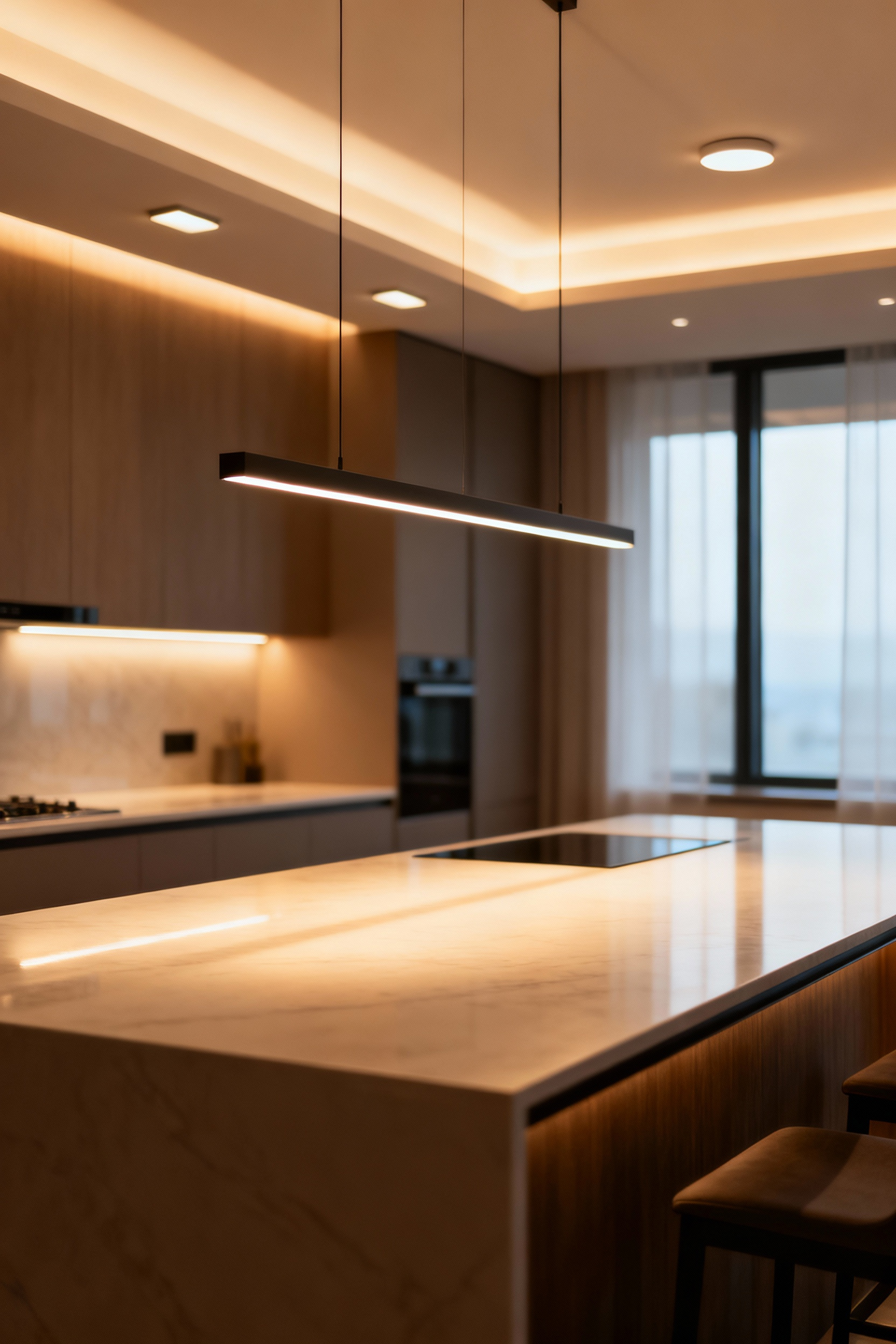
For very long islands, a linear suspension fixture can provide more even light distribution than a series of individual pendants, creating a clean and modern aesthetic. The choice you make is a statement about how you want the space to feel—grounded and anchored by pendants, or open and airy with more integrated options.
7. See Finishes as Light-Shaping Tools
The material and finish of your fixture do more than just match your cabinet hardware; they actively shape the quality of light. A polished chrome or warm brass finish will reflect light crisply, amplifying brightness and creating a more dynamic feel. This is wonderful for a task-oriented zone.
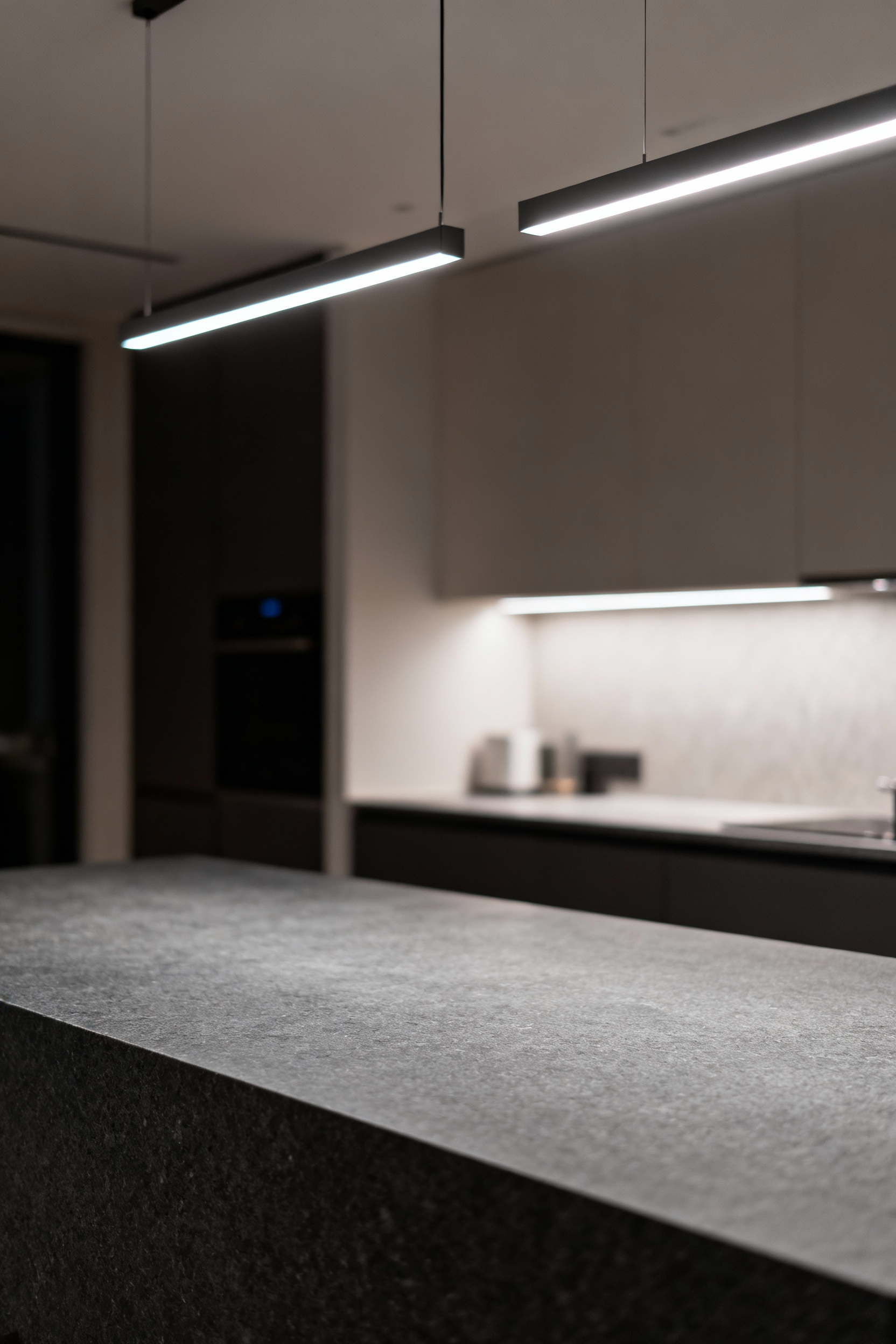
A fixture with a matte black finish, on the other hand, will absorb more light, yielding a softer, more contained glow that fosters intimacy. Frosted or opal glass shades are fantastic diffusers, spreading light evenly and minimizing harsh glare—a crucial consideration for visual comfort. This alchemical interplay between light and material is where a space truly comes to life.
8. Insist on True-to-Life Color
The Color Rendering Index (CRI) measures how accurately a light source reveals the true colors of objects, on a scale of 100. For a kitchen, this is non-negotiable. Natural sunlight has a CRI of 100, and your lighting should get as close to that as possible.

A low CRI light (below 80) can make your beautiful red tomatoes look dull and brownish or your fresh green herbs appear muddy. Insisting on a CRI of 90+ ensures that your food looks fresh and appetizing, which has a genuine impact on our enjoyment of a meal. From my work with healthy home materials, I know this isn’t just an aesthetic detail—it’s about honoring the vibrancy and nourishment of the food you prepare.
9. Master the Temperature of Light
The Correlated Color Temperature (CCT), measured in Kelvin (K), defines the perceived warmth or coolness of light. This has a profound psychological effect. Warmer temperatures (2700K-3000K) feel cozy, intimate, and relaxing, perfect for dining and socializing.
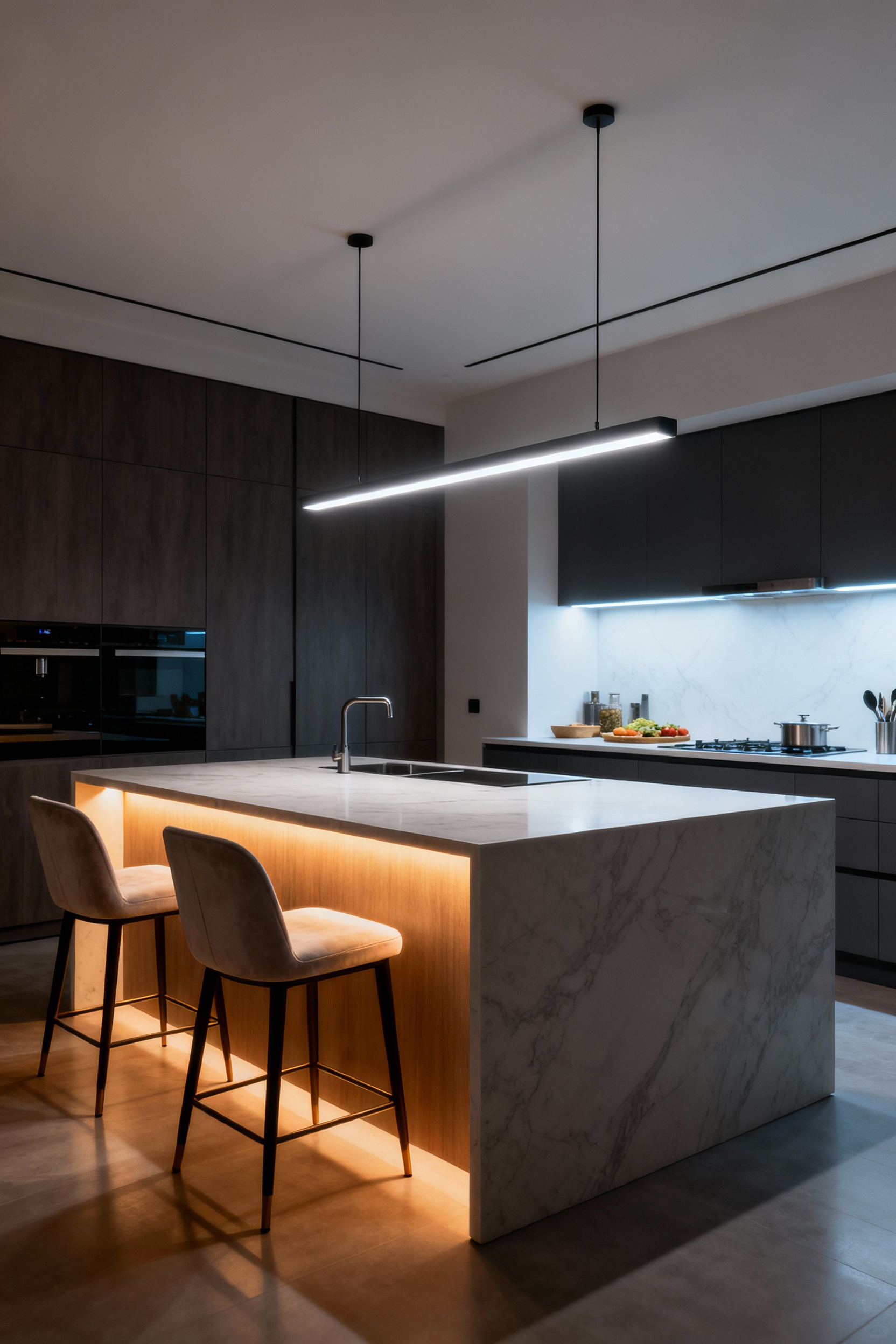
Cooler temperatures (3500K-4000K) feel clean, crisp, and energizing, ideal for task-heavy preparation. It’s crucial that the CCT you choose complements your kitchen’s material palette. A warm light will bring out the richness in wood cabinets, while a cooler light will enhance the crispness of white marble and stainless steel, creating a cohesive and intentional look.
10. Control Glare with Smart Design
Effective lighting is as much about where light doesn’t go. Glare—both direct from the bulb and reflected off shiny surfaces—causes eye strain and visual discomfort. Precision optical engineering is the key to mitigating this.

Look for fixtures with deep-set or recessed light sources, baffles, or honeycomb louvers that shield the bulb from direct view. A frosted glass diffuser can also soften the light source beautifully. What I tell my clients is this: you should experience the beautiful effect of the light, but you shouldn’t have to uncomfortably see the source of it. This simple principle dramatically increases the comfort and usability of your island.
Optimized Radiance: Strategic Placement and Integration
Now that we’ve selected our ideal light source, we must place it with precision. This stage is about the architecture of illumination—calculating heights, spacing, and layers to ensure the light is not only beautiful but perfectly optimized for every function your island serves.
11. Find the Perfect Hanging Height
One of the most common mistakes I see is hanging pendants at the wrong height. Too high, and the light becomes diffuse and ineffective for tasks. Too low, and they obstruct sightlines and create a physical barrier. The sweet spot is generally 30-36 inches from the countertop to the bottom of the fixture.
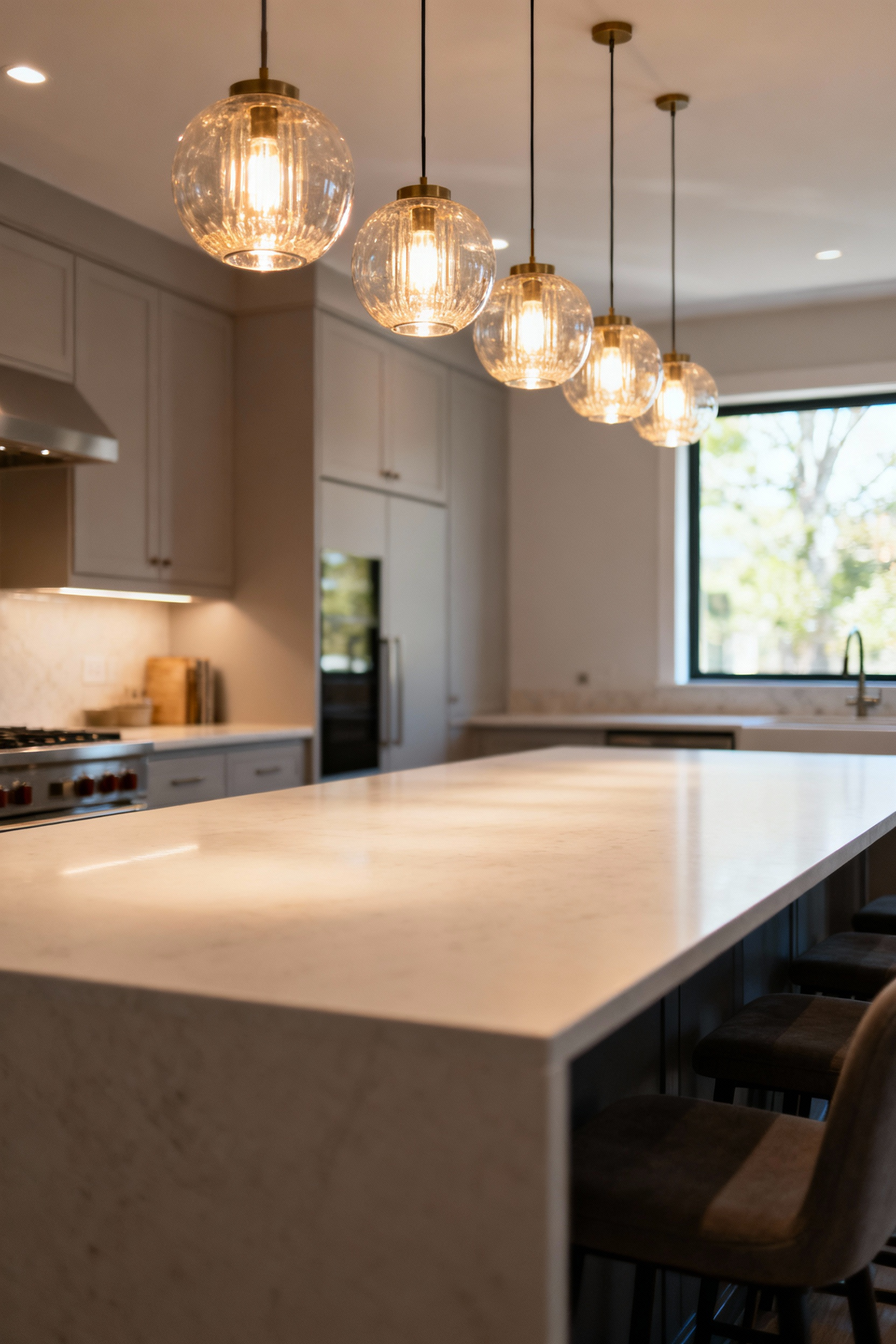
This guideline, however, must be adapted to your family’s height and the specific proportions of your space. The goal is to create a seamless vertical continuum where the lighting feels integrated and supportive, never intrusive. Take the time to test heights before making a final installation; it makes all the difference.
12. Create a Rich, Layered Effect
The most functional and inviting spaces are never lit by a single source. A sophisticated design layers different types of light. For your island, this means combining direct downlighting for tasks with a softer, ambient contribution.
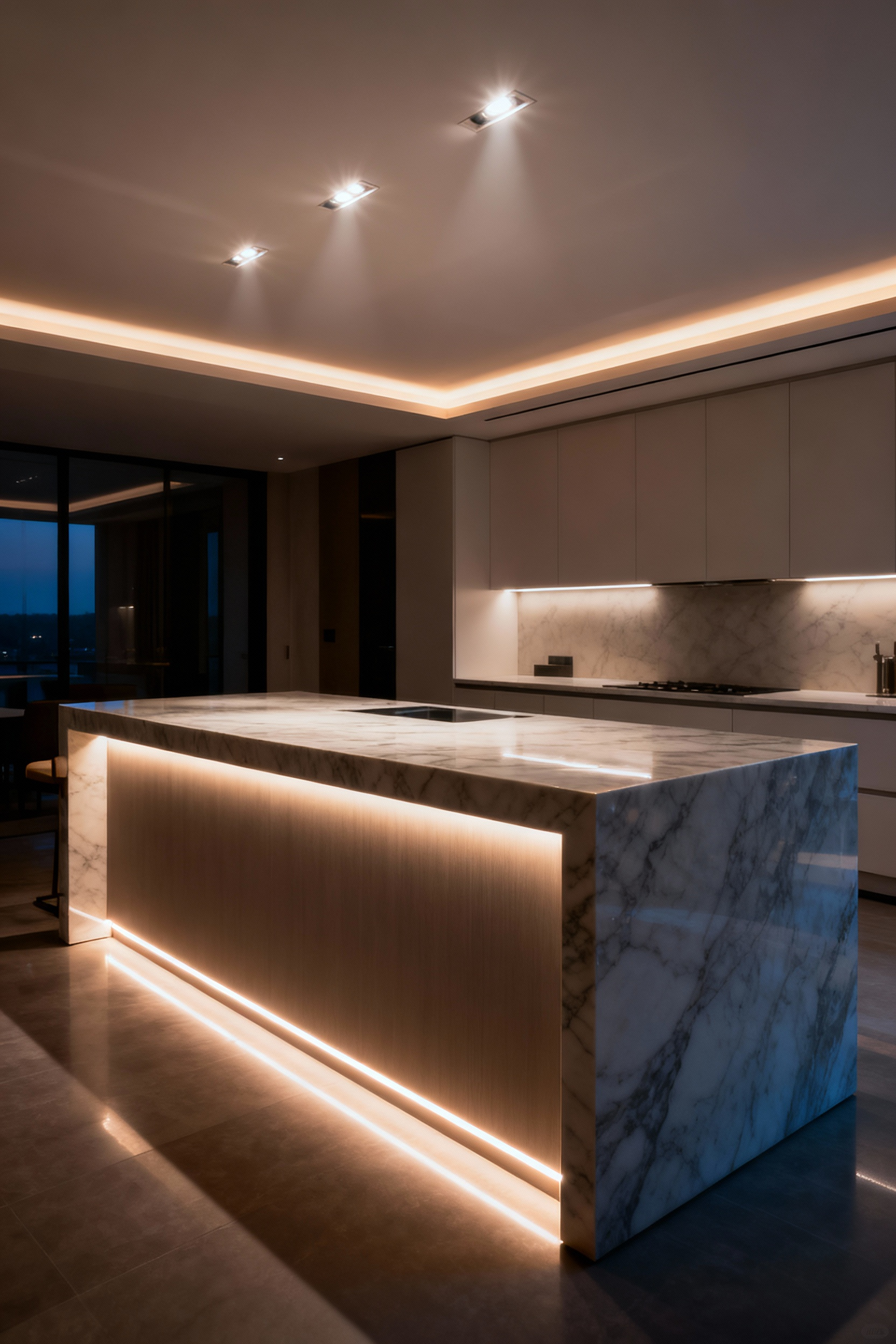
Imagine pendants that cast a strong pool of light downward onto your cutting board, but also feature an upper element that glows, bouncing a soft light off the ceiling. This multi-layered approach eliminates harsh shadows and creates a more balanced, visually comfortable environment that can easily adapt from a bright workshop to a relaxed social hub.
13. Scale Fixtures to Your Island’s Proportions
Visual balance is crucial for creating a sense of calm. The size of your light fixtures should be proportional to the size of your island and the overall volume of your kitchen. A massive, heavy pendant over a small island can feel oppressive, while tiny fixtures over a grand island will feel lost and insignificant.

As a general rule for multiple pendants, their combined visual width shouldn’t exceed two-thirds of the island’s length. For a single fixture, aim for a diameter that is about one-third of the island’s width. Getting the scale right ensures the lighting feels like an intentional, harmonious part of the design.
14. Eliminate Hindering Shadows
Nothing is more frustrating than trying to chop vegetables while your own body casts a shadow over your work. This is an ergonomic failure of lighting design. To avoid this, light should be positioned to come from in front of or from multiple points above the primary task zone, not directly overhead or behind you.
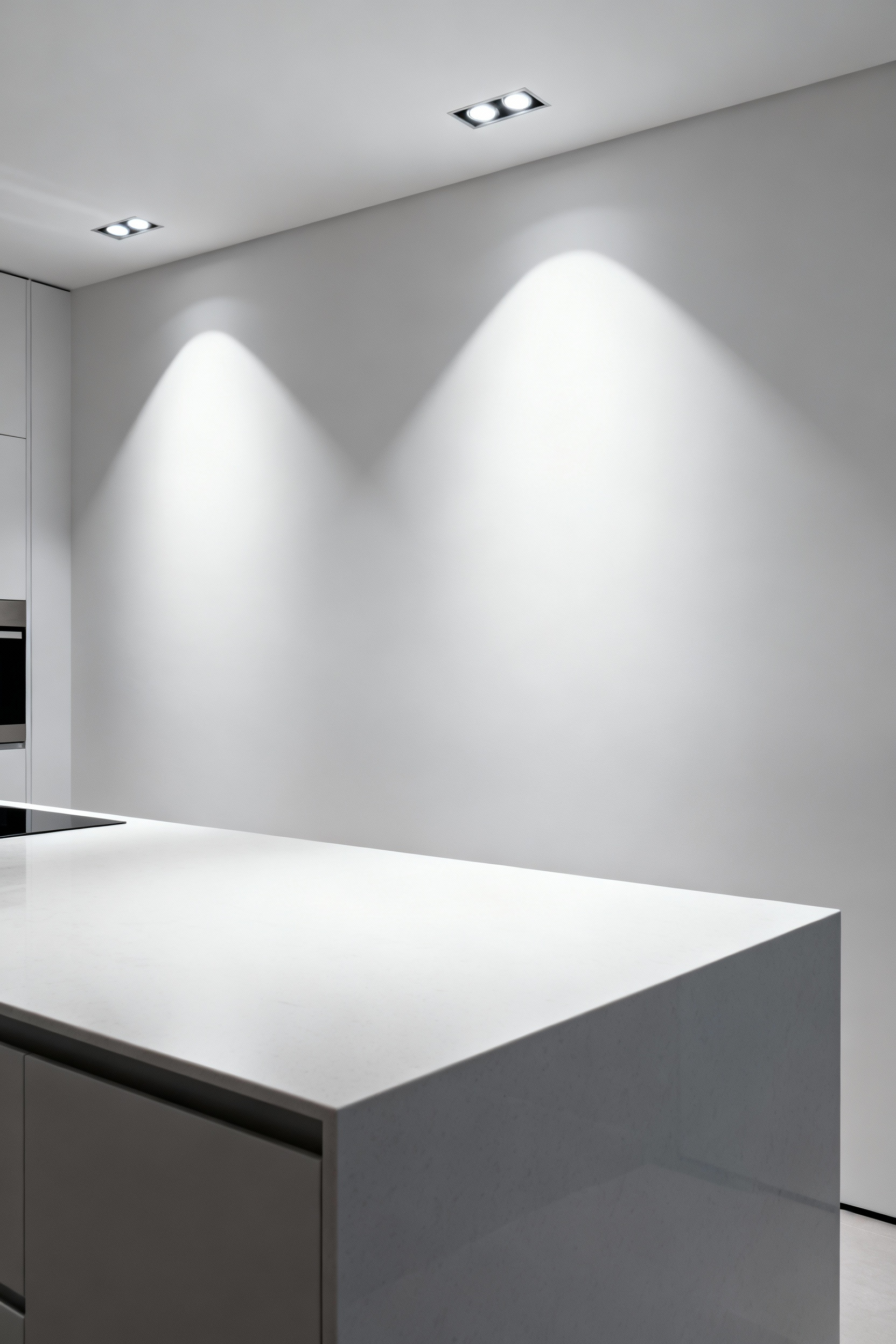
This is where a linear fixture or a well-spaced series of pendants truly excels over a single central light. The goal is to flood the work surface with consistent light from angles that minimize the obscuration caused by your hands and body, reducing eye strain and making kitchen tasks safer and more pleasant.
15. Ensure Even Spacing for a Cohesive Look
When using multiple pendants, the space between them is as important as the fixtures themselves. This “negative space” creates rhythm and visual order. An uneven or poorly calculated gap can make the entire arrangement feel chaotic.
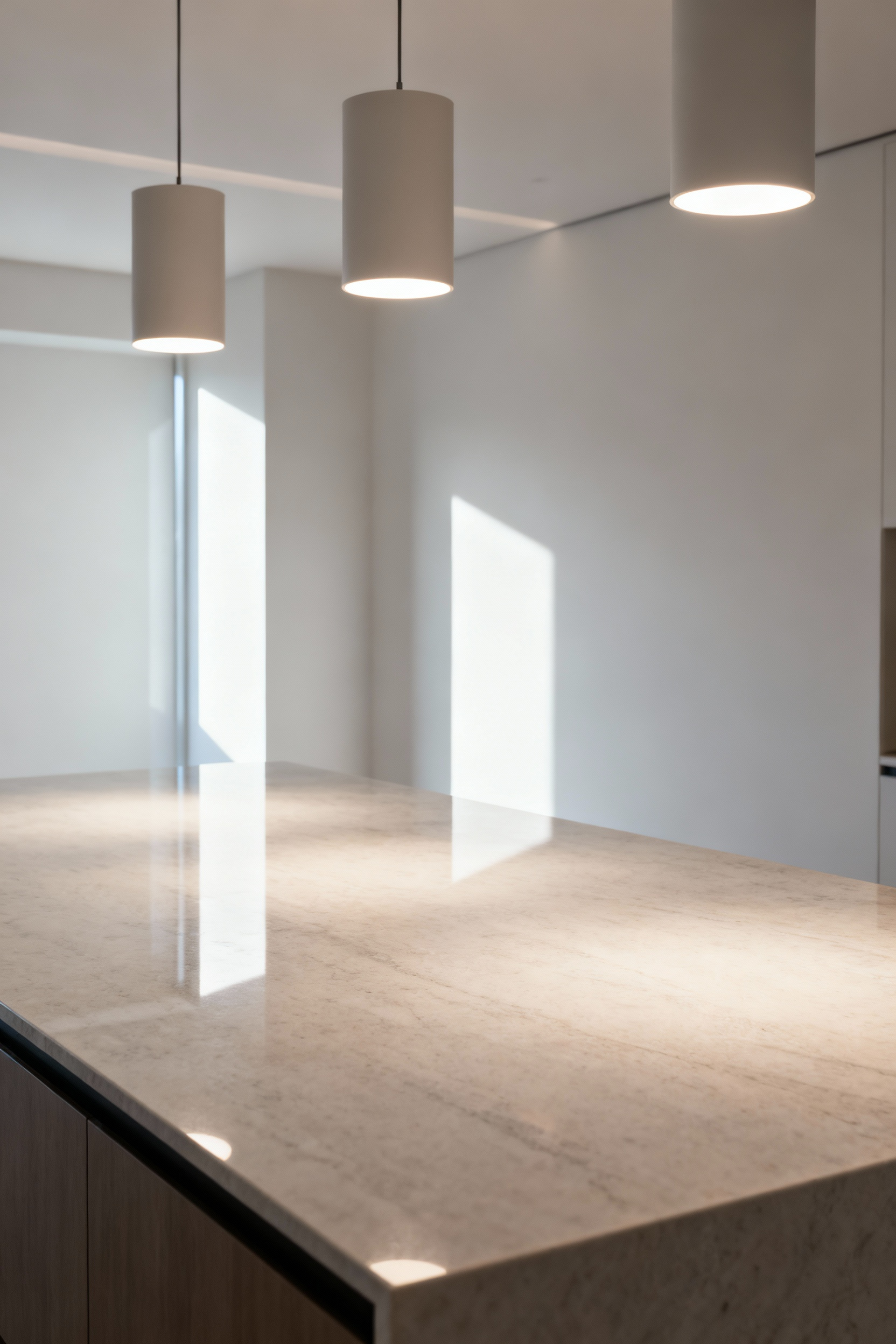
To achieve a balanced look, measure the length of your island, decide how much space you want from the edge of the island to the first pendant, and then divide the remaining length evenly between the fixtures. The result is a clean, intentional, and aesthetically pleasing installation that feels calm and orderly.
Adaptive Aura: Smart Lighting for a Responsive Home
The final layer of truly elevated design is adaptability. Smart technology allows our lighting to become a responsive and intuitive partner in our well-being, capable of shifting its aura to perfectly match our needs, moods, and the time of day.
16. Program “Lighting Recipes” for Daily Life
Intelligent dimming and scene control are about making sophisticated lighting effortless. Instead of fiddling with multiple switches, you can program pre-set “scenes” for your daily routines. One touch can activate your “Morning Prep” scene: bright, crisp task light over the island and soft light elsewhere.
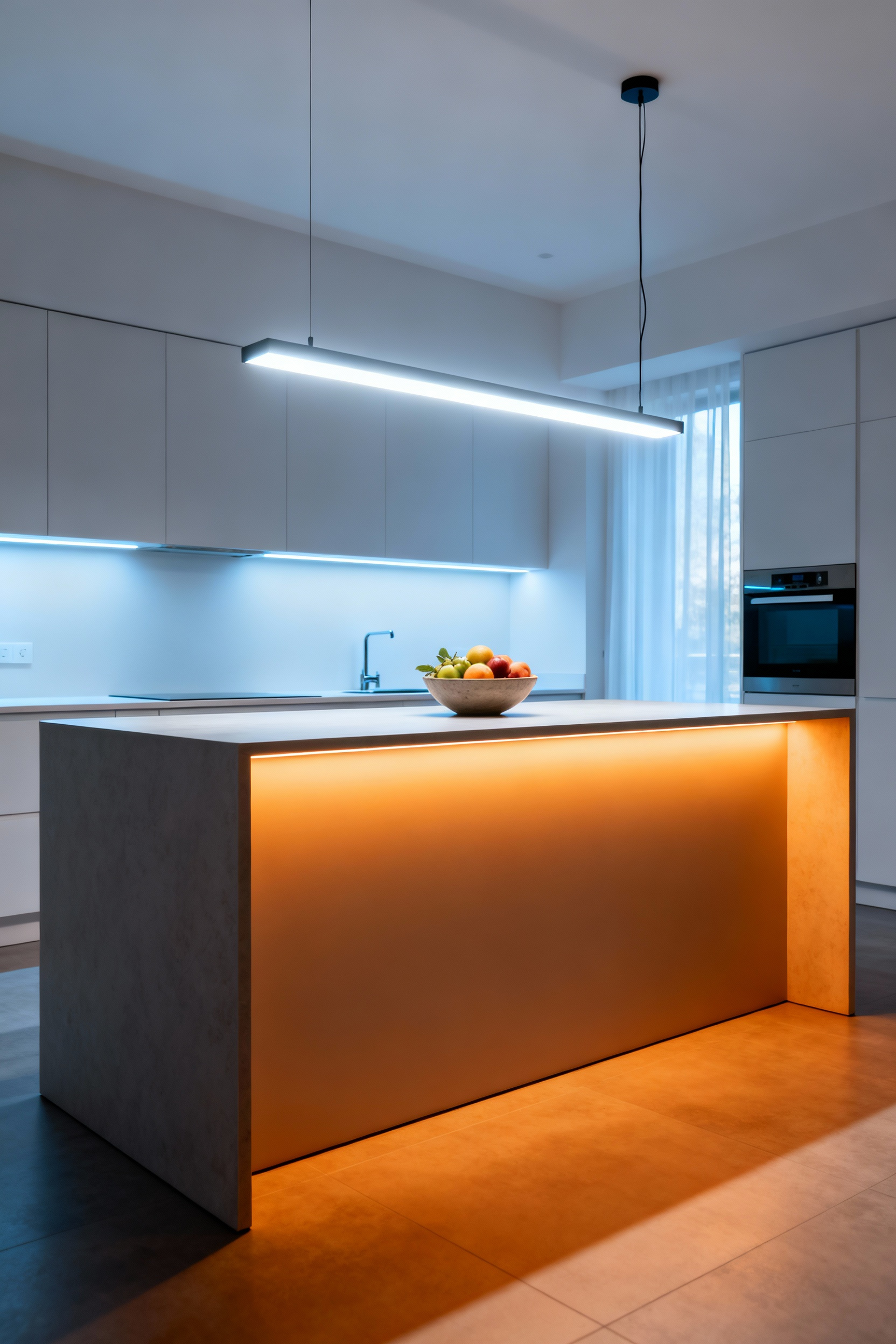
Another touch for “Evening Wind-Down” could dim the pendants to a warm glow and turn on only the subtle accent lights. What I love about this is how it reduces cognitive load. You’re not just controlling lights; you’re effortlessly curating an atmosphere, allowing the technology to support your desired state of being.
17. Use Tunable White Light for All-Day Wellness
As we discussed with circadian rhythms, tunable white technology is one of the most powerful wellness tools in lighting. It gives you the ability to change not just the brightness but also the color temperature of your light throughout the day. This isn’t just for mood—it’s for your health.
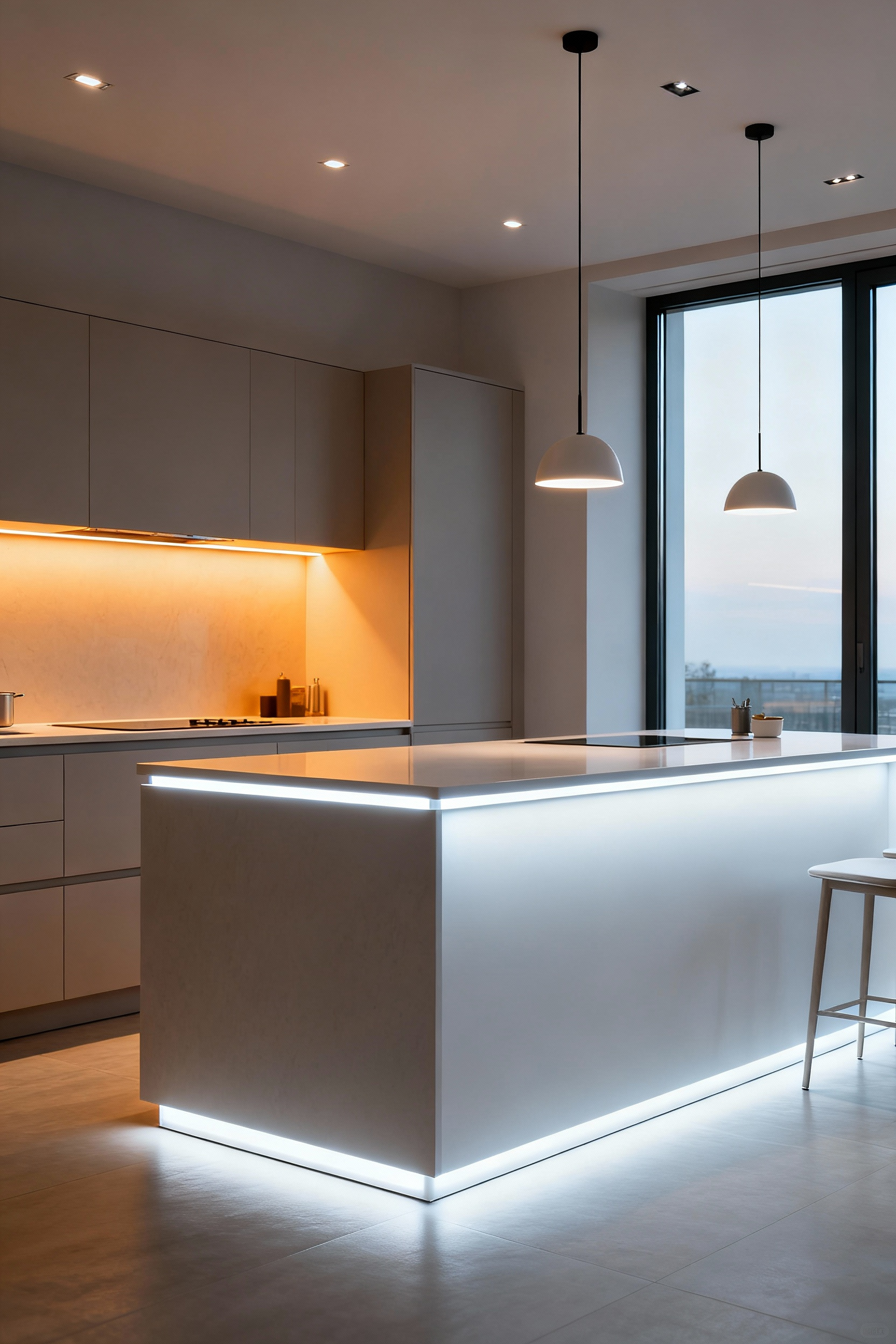
Syncing your island’s light to follow the sun’s natural path—cool and bright during the day, warm and dim in the evening—helps regulate your body’s sleep-wake cycle. In my professional experience, investing in tunable white light for a central hub like the kitchen island offers one of the greatest returns for your overall sense of well-being.
18. Choose Low-EMF Fixtures for a Calmer Space
Our commitment to a healthy environment should include the unseen elements. Electromagnetic Fields (EMFs) are generated by all electrical wiring and devices. For sensitive individuals, minimizing exposure is a key component of a wellness-focused home.
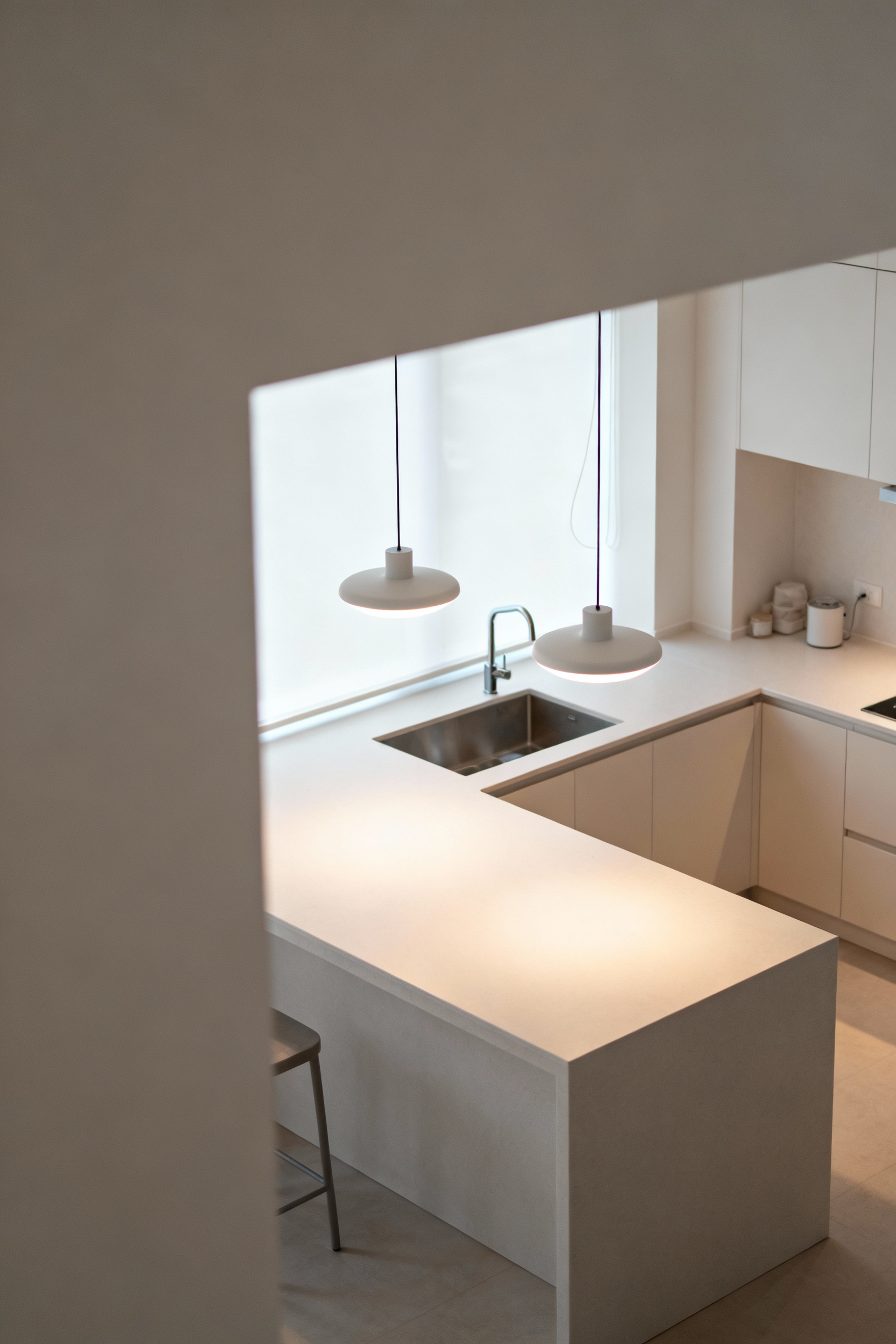
When selecting kitchen lighting over island, look for high-quality, low-EMF fixtures from reputable manufacturers. Furthermore, using shielded electrical cable for the installation can significantly reduce the ambient EMFs in a space where you spend so much of your time. This is a deeper level of care that contributes to a truly restorative and low-stress sanctuary.
19. Make Controls Intuitive and Effortless
The most advanced lighting system is useless if it’s difficult to control. The user interface should be simple, intuitive, and accessible. This can be a beautifully designed keypad with clearly labeled scenes, a seamless smart home app on your phone, or voice-activated commands.
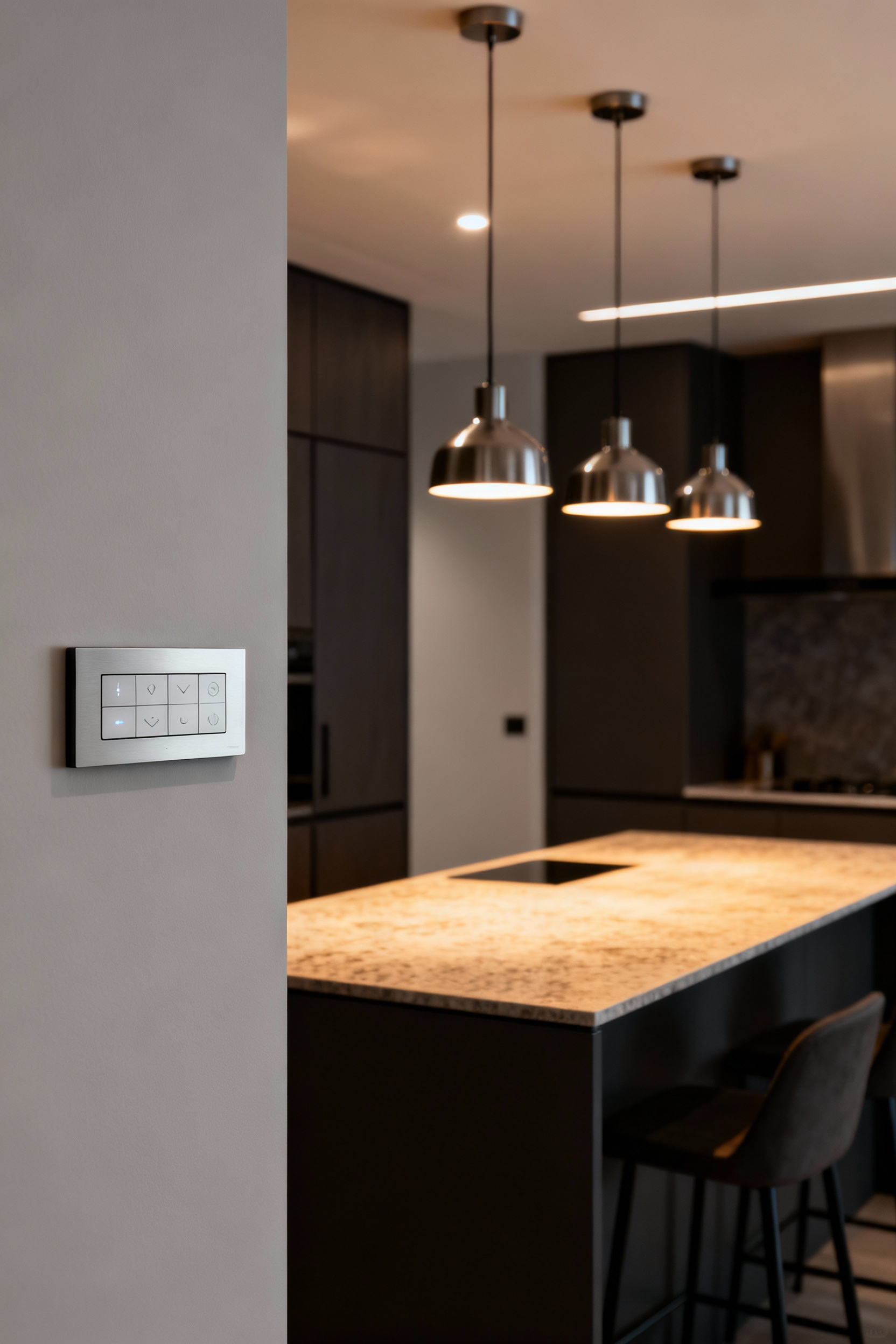
The goal is to remove any friction between you and your desired ambiance. The technology should feel invisible, a natural extension of your intention to make your space brighter, calmer, or warmer. The less you have to think about how to control your lights, the more you can simply enjoy living in your space.
20. Invest in Quality for Lasting Luminosity
Finally, a core principle of wellness design is sustainability and longevity. Investing in high-quality, energy-efficient LED fixtures with long operational lifespans is both an ecological and a practical choice. A well-made fixture will provide consistent, beautiful light for decades.
This reduces waste from frequent replacements and provides peace of mind. Prioritizing durable materials and reliable technology ensures that the luminary heartbeat of your kitchen will remain steady and strong for years to come, a lasting testament to the thoughtful curation of your healthy, happy home.
Conclusion
As we’ve journeyed through these 20 principles, a single truth illuminates the path: light is life. The choices we make for our kitchen island lighting are far more than functional or decorative; they are choices about how we wish to live and feel each day. We have the power to craft an environment that energizes us in the morning, focuses us during creative tasks, and calms us at day’s end.
You are now equipped with the understanding to see light not just as a utility, but as an integral wellness tool. I encourage you to approach your lighting design with this newfound intentionality. Think of every fixture, every bulb, and every switch as an opportunity to infuse your home with health, harmony, and happiness. Let the light you choose for your kitchen island become a radiant expression of your commitment to a life lived well.




